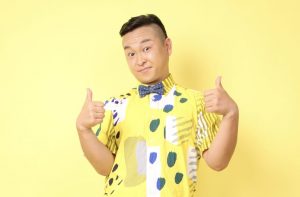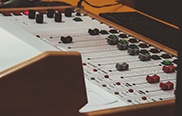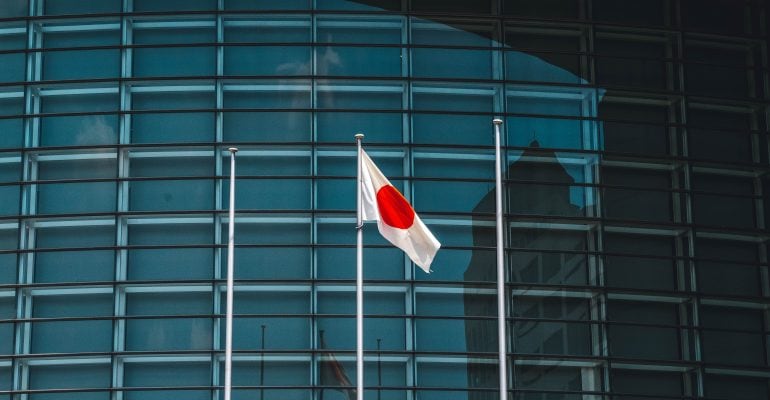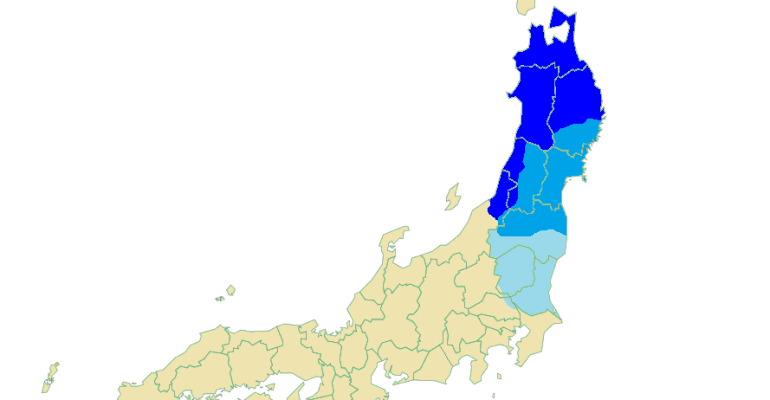Japanese Dialects: An Introduction
Japanese dialects have made and continue to make a significant impact on Western media and the wider world.
From mid-1900s classic samurai films to modern and mega-popular anime, to the recent resurgence in Japanese action movies (thank you Netflix), the different Japanese dialects from across the country give each voice actor and character a distinctive flavor.
By doing so, they provide the audience with vital insight into their personality, values, and background.
Dialectal variation, much like in British or American English, can differ greatly from what is known as ‘Standard Japanese’.
This is the kind primarily taught in schools and used by Japanese newscasters and politicians.
Depending on the speaker’s region of origin, their dialect can connect them to a sense of geographical heritage.
Around the 1950s there was something of a push for the people of Japan to converge on using Standard Japanese.
However, in recent years, it has been seen as much more acceptable for people to embrace their differences in speech patterns instead of homogeneity.
The result is that now a person’s dialect can be a significant source of pride.
In this guide, we will talk you through the landscape of Japanese dialects and go into further detail on some of those that are most prominent.
We’ll analyze their unique styles and what you should consider when selecting a Japanese voice actor for your project.
The Geographic Landscape of Japanese Dialects
Japan is not an island, but an archipelago consisting of over 14,000 smaller islands including the mainland.
Overall, it is generally understood that Japanese has around 10-15 major dialects.
That said, some counts put this number up to 47—accounting for smaller pockets of the population that use those dialects and academics debate over which can be considered a true phonological variation.
Luckily (else this blog post could end up tens of thousands of words long), scholars generally agree that Japanese dialects can be broken into two distinct groups:
- Western, which includes Osaka and Kyoto
- Eastern, which includes Tokyo among its numbers.
Japanese relies heavily on the pitch to convey meaning. In other words, it depends on which syllables carry stress and what inflection they take.
To the east, you’ll generally find the simpler Tokyo accent.
To the west, you’ll find the more complex pitch accent known as Kansai.
Of course, this isn’t to say that there’s an invisible line in Japan and that you’ll only find distinct dialects on each side.
As people migrate and move homes away from where they were born, and with modern, convenient means of transport, language branches have spread out over Japan and mixed together forming new local variations.
In the next section, we’ll discuss the impact this variety can have on Japanese narration and voice acting.
The Influence of Dialects on Japanese Narration and Voice Acting
Think about some of the Japanese media you’ve enjoyed in the past.
This could be anime series, films, or even video games.
Now, think about the characters that stand out the most.
What kind of personality did they have? What was their voice like? And crucially, did the way they speak impact the way their character was presented?
The answer, clearly, is that of course it did!
In fact, some of the most memorable characters, good or bad, are coded specifically with certain dialects in mind and with assumptions based on how they speak.
As a Western example, think about how many villains in popular media feature prominent British accents; most often using a version of British English called Received Pronunciation, or RP. The way King Charles speaks.
Characters like Scar from The Lion King, Anthony Hopkins’s Dr. Hannibal Lecter, or Tom Hiddleston’s Loki in The Avengers.
Or the way that a Southern American is often used to communicate a character that is more rough around the edges.
These tropes are much the same when considering Japanese voice acting.
For the most part, the majority of characters will be found using a Tokyo dialect, particularly for the main characters.
This is largely because it has a lower degree of variation, and as a result is closer to the ‘dictionary’ pronunciation of Japanese, and the easiest to understand even for most Japanese viewers.
Conversely, the Kansai dialect is often used for characters who have a ‘harsher’ style of voice, thanks to its higher level of melody and usage of complex pitch patterns.
Now, let’s move onto a breakdown of some of the more commonly found dialects, and go through an overview of their characteristics as well as how they’re used in mainstream media.
Major Dialects: An Overview
Standard Tokyo Dialect
The Tokyo dialect became the standard during the Meiji period of the mid-18th century to early 19th century.
This was a time of great change in Japan whereby the country transitioned from an isolated feudal society to an independent power.
As part of this transition, policies were put in place to unify the language so that the different regions could better communicate with each other.
Over the next few decades, the drive to replace regional dialects with the Tokyo standard continued.
Eventually, though, regional variations regained value, and were viewed as important cultural links to the past.
Today, even while there is now a more open mix of local idioms, the Tokyo dialect continues as the standard, and as such remains strongly linked to ideals of “correctness” and “civility.”
The vast majority of characters in any given Japanese-speaking piece of media will typically use this form of pronunciation, particularly the main characters.

Japanese Voice Actor Akira K.
As the much-in-demand Japanese voice actor, Akira K. clarifies:
Because the Tokyo accent is widely used as Japan’s standard language, it makes it suitable for intelligent, sophisticated characters, as well as protagonists and narrators who represent a “neutral” persona.
It’s a dialect that’ll often be used to characterize charisma or leadership qualities too with examples including Vegeta from the Dragon Ball series, Light from Deathnote, and Shinji in Neon Genesis Evangelion.
In the real world outside of fiction, this Japanese dialect is most often used when ease of understanding is a necessity.
This is why it’s preferred among news readers and public speakers.
It’s also why businesses tend to opt for it when choosing voiceovers for explainers, promos, and other corporate videos.
A great example is Akira’s VO for Analog Devices below:
If you’re looking for a Japanese voice actor or narrator for your project and you want your speech to be at its most accessible, this is the kind of dialect to look out for seeing as it’s the closest to ‘Standard Japanese’ as you’re going to get.
Kansai Dialect
As Akira explains further:
The Kansai accent (mainly Osaka dialect) emphasizes warmth and energy and is often used for humorous characters or merchants and lively personalities.
Kansai dialect can also convey confidence or a hot-tempered nature, making it a popular choice for rival characters or outlaw-like figures.
However, if you’re worried that a Kansai speaker would be unintelligible you’ve got nothing to fear; you’ll find that around 30% of characters in popular Japanese shows use this form.
Kansai-ben is more popular among younger speakers of Japanese.
Good examples include Kero-san in Card Captor Sakura, Ichimaru Gin from BLEACH, and all of the characters in Lovely Complex, seeing as that show takes place in Osaka.
Tohoku Dialect
Japan’s Tohoku region spans six large prefectures, from Fukushima in the south and the prefecture closest to Tokyo to Aomori, the northernmost tip on Japan’s main island.
As the region covers a vast area of land, it makes sense that it also boasts a variety of different dialects
Yet even with variations, all of these particular Japanese dialects generally share some linguistic and phonetic characteristics, and so are known collectively as the Tohoko dialect.
These shared features include using “da” after verbs ( considered a pronunciation faux pas in other parts of Japan), or drawing out vowels, making the accents sound slower and more slurred.
Equally, many people from Tohoku voice unvoiced consonants so that the “k” sounds more like a “g” and “t” has a pronounced “d” sound.
As with lots of other intensely regional dialects in British and American English (think the Deep South, or the furthest Northern and Western regions of England), these Japanese dialects often preserve facets of their respective languages that have since fallen away in the mainstream.
For example, higher use of nasal consonants, and distinctions between vowels have become combined in more urban dialects but not in the typical Tohoku accent.
All of this together has come to be associated with rural backwardness, giving those from Tohoku a somewhat unfair reputation as being “hicks” or country “bumpkins.”
Examples include the husband and wife team, Goku and Chichi from the Dragon Ball series, boonies bad boy Duval from One Piece, and Major Armstrong from Full Metal Alchemist.
Hokkaido Dialect
As the second largest island and northernmost prefecture in Japan, Hokkaido was one of the last regions in the country to be annexed, by which time a broad standard of Japanese had already settled.
This means that this form of dialect is much more closely linked to Tokyo-ben, however more than enough nuances and differences remain for it to be classed as its own entity.
Generally, when series or story arcs are set in the Northern reaches of Japan, or if characters hail from there, show writers and creators generally elect to use this dialect to give an air of consistency and authenticity.
For example, the series Saishuu Heiki Kanojo (She, The Ultimate Weapon) is set in Hokkaido, and as such the characters all use this unique dialect, or Usui Horekeu from Shaman King.
Niche Dialects: A Hidden Gem for Authentic Storytelling
If you’re looking to add very specific, or unique characteristics to your project, Japanese speakers have many, many more manners of dialectal variation to choose from that we have not covered fully in this guide.
Among the most prominent include:
Okinawa
These islands, off the southwest coast of mainland Japan, were not subject to colonization until after the 1800s and were known as the independent Ryukyu Kingdom.
Back then, each island in this distinct archipelago essentially had its own respective languages.
Because of this, the further away from mainland Japan you travel, the further away from Standard Japanese you’re likely to find yourself.
In fact, a significant part of the population doesn’t necessarily associate themselves as being ‘Japanese’. The closest analog would be the Hawaiian islands and their relation to mainland USA.
Okinawan dialect is often perceived as more laid-back.
Nagoya
Unsurprisingly, most often found in the environs of the city of Nagoya, this dialect (thanks to its geographical position) also finds itself between Kansai and Tokyo-ben as a veritable blend of the two.
It is often characterized as similar to West Coast accents in the USA.
Yajirobe from Dragon Ball is a prime example.
Hiroshima
Found in the Chogoku region to the West of Kansai.
Thanks to the well-known 1974 film The Yakuza, which takes place in Hiroshima and subsequently features the accent heavily, this dialect has become intrinsically linked to the Yakuza in mainstream media.
Speakers of Hiroshima-ben are likely to be perceived as standoffish and fiery.
Kyushu
Originating from Japan’s third largest island, this comprises locations including Fukuoka, Kumamoto, and Nagasaki and sits to the southwest of Hiroshima.
Like Tohoku, this is one of the more characteristically regional dialects, with common speakers stereotyped as brash and headstrong.
Things to Consider When Hiring Japanese Voice Actors for Specific Dialects
Now that you’ve got a solid understanding of the way Japanese dialectal variation can have a huge impact on the feel, style, and emotion conveyed in your project, you’re all but ready to find the perfect match.
There are just a few extra points left to consider; the skill level of your Japanese voice casting choice, their versatility, and the balance you’re looking for in regards to authenticity versus accessibility.
Of course, the most experienced voice actors will be among the most expensive, but that experience might be vital depending on the complexity of what you have in mind.
For simple voiceovers for an educational video or tutorial, without much need for nuance, you’re likely to be perfectly happy with someone at an entry level.
However, if you’re designing a video game, movie, or TV series for a broad, distinguished audience, hiring an actor who can convey subtle meaning and believable emotion is a must.
Secondly, versatility. Do you have the budget to hire several different actors to pin down the voices you require? Or would it be better to find someone who has a firm grasp of multiple dialectal styles?
Keep in mind that voice actors who are from the region you’re looking to exemplify will always be the best bet for authenticity; think about all the performances you’ve heard from British actors trying to play an American or vice versa where the delivery just doesn’t quite hit the mark.
Native speakers are much more tuned in to these inconsistencies, and you want to avoid the risk of this distracting from the message you’re trying to convey.
And finally, consider the audience you’re looking to appeal to.
As we’ve mentioned, many dialects may not be the most accessible to a wider audience, and there’s a reason that the majority of voices in popular Japanese media rely on just two dialects, particularly amongst their recurring cast.
For each piece of dialogue or voiceover, consider whether it’s more important to have your speaker easily understood, or whether the authenticity of their language is crucial to your needs.
Resources for Finding Japanese Voice Actors with Dialect Expertise
Now, you’re ready to find the right Japanese narrator or voice actor for your project.
We’d strongly recommend hosting broad auditions and hearing from a healthy pool of applicants to make sure the voice and dialect match what you’ve written.
There are many agencies available that can put you in touch with quality talent.
Or, it could be as simple as posting your job on Voice Crafters.
We work with professional freelancers, plus we pre-screen all of our talent to make sure you’re getting the best match for your specific needs.
You can post a detailed overview of your project and your requirements on the platform, and we’ll send out the casting call to our network of professionals.
You can also listen to samples and hand-select voiceover artists that best match your brief to send you quotes and auditions for free, so you can evaluate and hire the perfect voices for your project.
Conclusion
With all of this in mind, you should have everything you need to find exactly what you’re looking for when it comes to Japanese voice acting. To summarize:
- Most voice actors use Tokyo or Kansai-ben, as these are the two most prevalent and accessible dialects
- For greater authenticity, make sure your choice of dialect matches your setting and your speaker’s origins
- Some dialects are less accessible than others, so consider your audience carefully
- Make sure to hear a range of different auditions to make sure your pick matches the tone and feel of your project
- If you’re looking to simplify your hiring process, feel free to post your job listing on Voice Crafters
FAQ









0 Comments